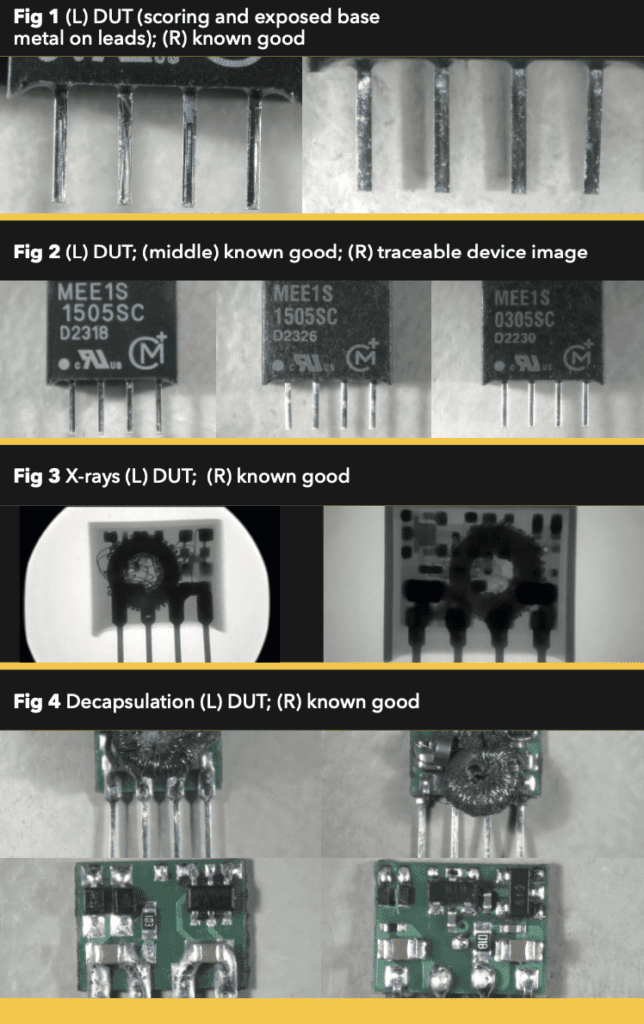 In this article, a Princeps counterfeit investigation demonstrates the value of comparison to a known good device
In this article, a Princeps counterfeit investigation demonstrates the value of comparison to a known good device
This month’s counterfeit investigation began when initial visual inspection of a DC-DC converter device under test (DUT) purchased from a global broker highlighted some red flags—exposed base metal on leads, apparent plating finish variability and scoring marks along the leads (Fig 1)
Factory-new components can exhibit marginal red flags, so when possible, Princeps compares suspect parts to a traceable known good device. The known good device’s leads (Fig1 R) exhibit some plating finish variability but none of the exposed base metal or scoring (Fig L).
Comparison of component markings exposed key differences. In Fig 2 there is an offset in DUT marking absent on the known good. Also, the CM+ logo is clearly different. The part marking alignment and logo layout of a traceable part also matched the known good.
X-rays showed construction differences between the DUT and known good, with variation in internal layout, case material density and messy coil winding.
Finally, decapsulation shows markedly different construction quality with the known good having several additional components, cleaner soldering and a tidier finish. The parts were reported to the ERAI and removed from the supply chain.

